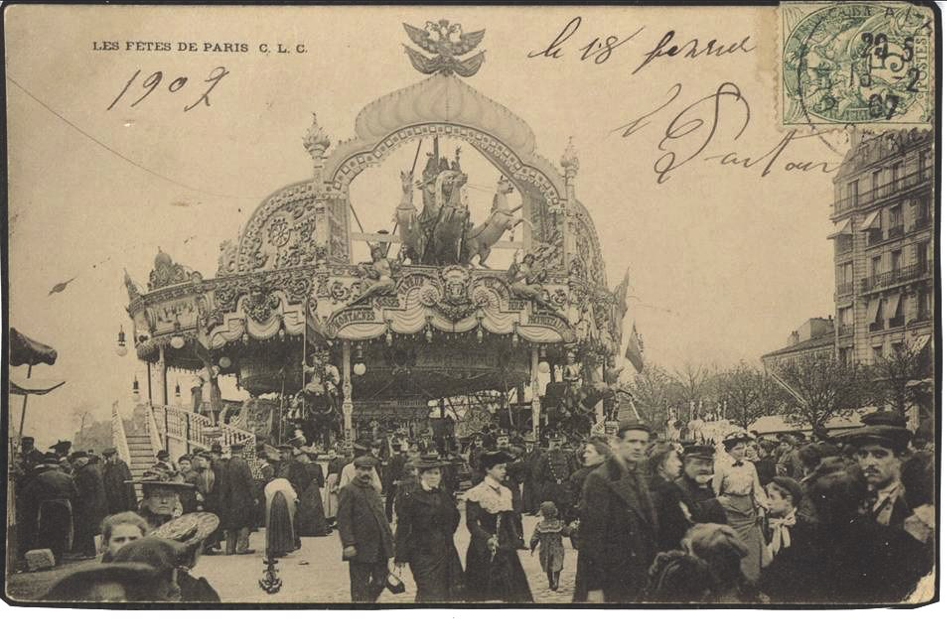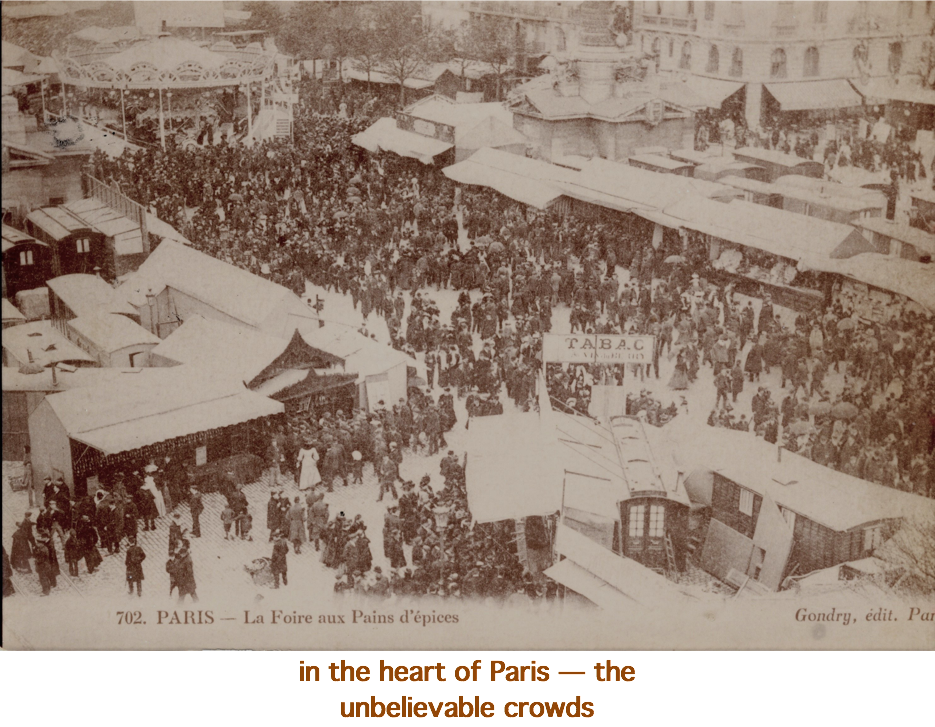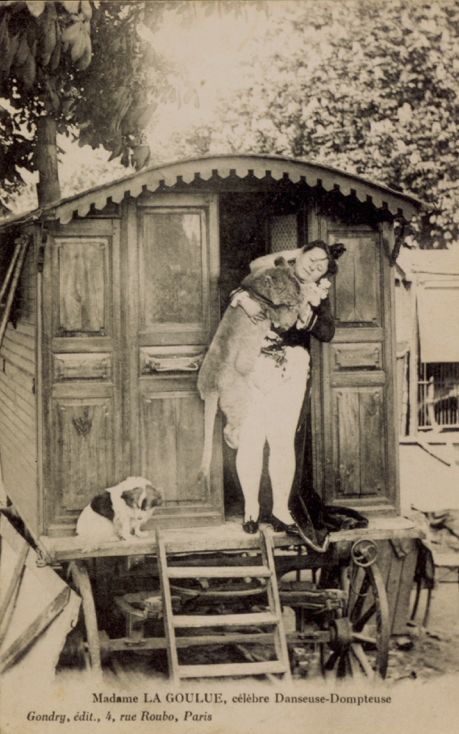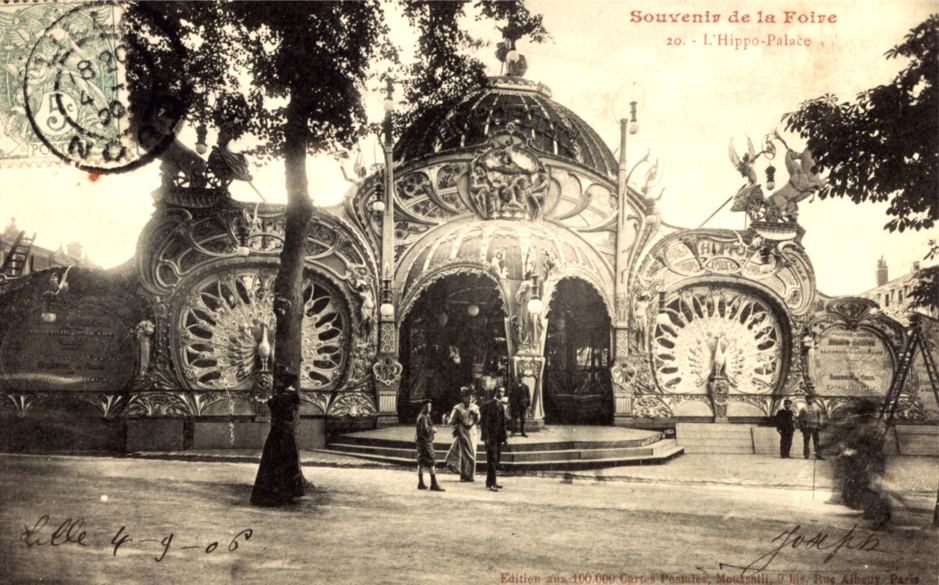Sarasota's Charlotte Perret Publishes Book About Parisian Carnivals

Charlotte Perret
Image: Wyatt Kostygan
As a Francophile, I'm in awe (and maybe a teensy bit jealous) of the life of Sarasota's own Charlotte Perret, who lived for nearly 20 years in the City of Light, where she raised her family as she studied French lit at the Sorbonne (swoon!) and taught English to French business execs. While there, family members of Parisian carnival folk befriended Perret, brought her into their guarded world, and not only shared their street fair stories, but also their historical vintage memorabilia dating from the 1880s-1950s--some never before seen or published.
Enter At Their Doorstep, a first-hand glimpse into the exciting itinerant lives of generations of carnival families who brought massive street fairs to Paris, sometimes for weeks at a time--and often with the latest 20th-century industrial inventions like the automobile, electric lighting and cinema.
Just me and a cuppa tea got lost poring over the enchanting pages of Perret's book, which includes photographic postcards and stories of Paris, and the fashions and happenings of the early 1900s as seen through the eyes of Perret and her carnival folk friends. Think of this as a brilliant coffee table book for you (or a stylish friend)...

At Their Doorstep is a wondrous collection of postcards that serve as a unique historical mapping of Paris’ carnival folk – what inspired you to write this remarkable tome?
I was touched, honored and excited to be the first outsider whom the proud carnival families allowed to interview and examine their incredible home collections of vintage fairground postcards sent between older generations in the early 1900s. The sheer inventiveness, beauty and complexity of the attractions and the amazing street fair phenomena [the families] created stimulated my mind and imagination. I began my interviews with the carnival families quite by accident in 1981, but it wasn’t until digitalization, in the mid-1990s, that reproducing my photographic copies in book format became possible. The love of my material and of these people who shared their lives with me never flagged over the many years it took me to publish. It still hasn’t.

I could just dream about meandering through a Parisian street fair…could you describe one for us?
Life was difficult in 1900s Paris. Parisians worked long, hard hours with no vacation, sick leave or holiday. Many never traveled outside their neighborhoods. Few owned any transportation. They were renowned, however, for their enthusiastic frivolity and huge appetite for entertainment. None of the thousands of cafés and café-chantants of Paris could satisfy this need for distraction as fully as the fairs that came directly to the doorstep of each neighborhood. Every three weeks, enormous itinerant fairs, dedicated to entertaining adults, filled streets, boulevards and sidewalks of an entire section of an arrondissement before packing up and moving on to the next.
Some 500 carnival families' tents, stalls and structured facades outdid one another to attract passersby into paying customers. Ordinary Parisians experienced the technologies and inventions of the industrial age. Electric lights on the carousels and fairground street displays, powered by the carousels' steam engines, thrilled a public that knew only dim gas lighting in their apartments and on the streets. And there was music everywhere--small, live bands; grand wooden organs; wooden sculpted carousels, weighing tons; wooden sculpted theaters and cinemas that announced themselves with smaller outdoor organs; hurdy-gurdies played in many shows.
The thrill was palpable. You could go to the fair, take it all in, not spend a cent and leave completely satisfied!

What’s the biggest imperception about carnival families?
That they were gypsies! Although the public and the authorities destructively perceived them as such, carnival folk were extraordinary, industrious entrepreneurs in a static French society where entrepreneurship rarely existed. Most had abandoned their lives as peasants or workers or vagabond performers to join a new and expanding field of entertainment as owners of attractions creating itinerant fairs. They looked to make their living as masters of their own lives. It was a huge [risk]. Many succeeded, many failed.
What would we be surprised to know about them?
Carnival folk were creative, hard working, conservative, religious people. Many were Free Masons. Most were French, but there were also other Europeans and a few from the Middle East. Since they lived on the fringes of society, within their own social order, their immediate family was the only [steadfast] element in their lives. Every member of the family participated [in the carnivals]; they learned everything from family members and shared all responsibilities to create, run, and repair their own attractions and work the fairs. All successful families took great pride in their work.

Do you have a postcard that’s particularly meaningful to you?
There are several, each showing an entirely different aspect of carnival life. The first is of the one and only Wilbert Family Hippo-Palace, the grandest and greatest attraction on the fairgrounds until post-World War II. Its sculpted, heavily adorned wooden Art Nouveau exterior weighed some 100 tons and is as regal and elaborate as the highly stylized, palatial interior that sheltered its sculpted carousel.
The other postcard is of La Goulue, the renowned, early 20th-century redheaded can-can dancer at the Moulin Rouge, made forever famous in the posters and paintings of her dear friend,Toulouse Lautrec. La Goulue became a carny and endured terrible personal tragedies that drove her to alcohol and a lonely death. My favorite postcard is of her standing in front of her shabby house wagon, elderly and poor, hugging her favorite animal, a lion cub.
I found the stories about each of these postcards extraordinarily moving, and they have remained etched in my mind since told to me more than forty years ago.
Will you share one of the stories with us?
As she lay ill in her bed, the moribund grandmother of one of my favorite carnival people told me this story about La Goulue:
“La Goulue had been a dancer, a rather vulgar woman who used to show her legs. Her thighs were still wonderful, but her face was worn and ravaged by drink. She came from the working class, a nice woman, [but] naïve, and even though she was so well known, she was not haughty and she talked with everyone.
She first came to the fairgrounds to see the animals at the menageries. She loved animals, especially the lions, and seemed to have a way with them. Then, one day, the animal trainer, whose name was José, asked her to work for him selling tickets. Before long, she was working in the animal ring. She was a natural performer who knew how to please the public, and she was an immediate sensation. She and José became lovers, but that didn’t last, and when she opened her own music hall at the fairs, her health had already deteriorated from heavy drinking. The performances were not particularly good. Her dancers were old cabaret dancer friends from her days at Montmartre, plus a magic act or a singer to lend the show greater respectability.
She was not one to save money and she began selling herself to anyone to get money to buy alcohol. She wound up hawking fish door to door at the fairs. I was sad when I heard she died.”
For more info, and to order a copy of At Their Doorstep, click here.

